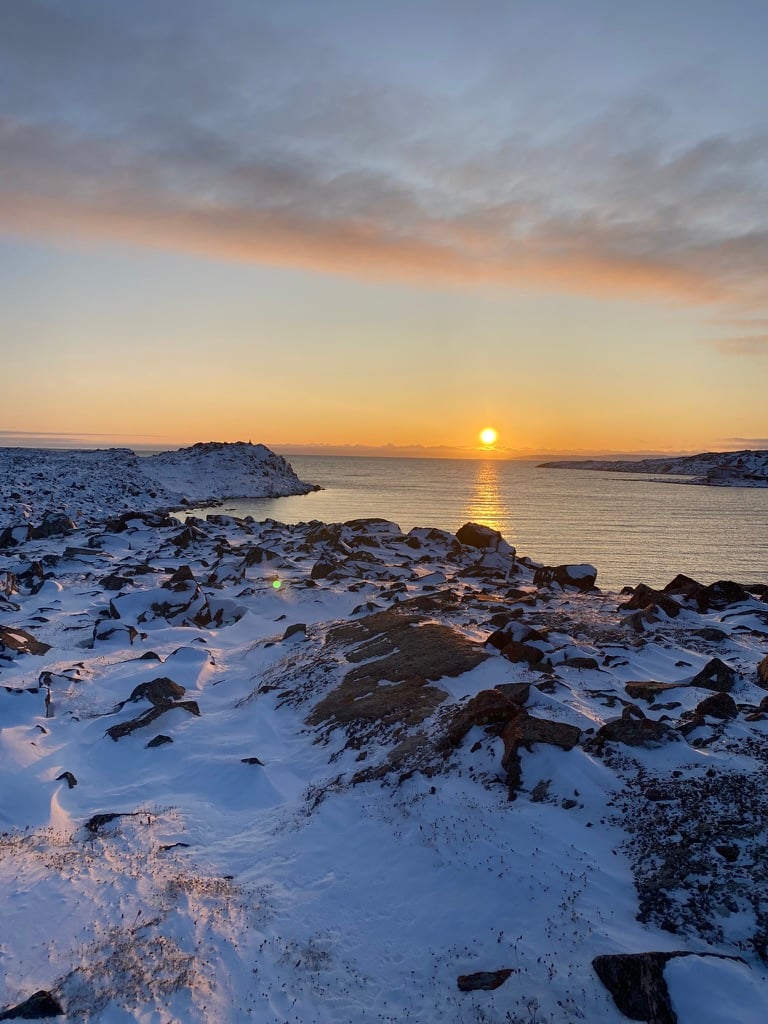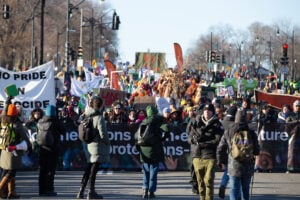Today’s guest is Jimmy Ullikatalik, the manager of the Taloyoak Hunters and Trappers Association and project manager for the Aviqtuuq Inuit Protected and Conserved Area (IPCA), a proposed 90,000 square kilometres of marine, terrestrial and fresh-water ecosystems in Nunavut. Jimmy also represented Nunavut at COP26, the UN Climate Change conference in Glasgow.
In October, I was lucky enough to make my second trip to Nunavut, to the hamlet of Taloyoak. It is the most northerly community in mainland Canada. It is home to about 1,000 people, mostly Inuit, on the Aviqtuuq or Boothia peninsula, which juts into the Arctic Ocean and Northwest Passage west of Hudson’s Bay. The town is charming, featuring rows of brightly coloured homes reminiscent of Atlantic Canada. It’s situated on Spence Bay and surrounded by a lovely rolling, rocky landscape.
I was there with my colleague Tom Lundy for a week of podcast training with Inuit youth at the Netsilik school, supported by Canadian Geographic and Polar Knowledge Canada. We’ll be bringing you the students amazing storytelling in the new year.
Today, we focus on Jimmy, an engaging and remarkable person. The Aviqtuuq Peninsula that he is pushing to make into an Inuit-run conservation zone would be the first of its kind anywhere in the world. Inuit locals are already patrolling it as part of the federally funded Guardians Program, Inuit-led ecological monitoring and knowledge gathering.
The wildlife population here on the Aviqtuuq Peninsula remains strong and healthy, with large herds of caribou and muskox, polar bears, foxes, seals, whales, fish, migratory birds and more. That, in part, is because the elders in this community successfully blocked a planned oil pipeline through the peninsula in 1972. That victory is important in a place where hunting and fishing on the land are significant contributors to local food security and a means of maintaining physical and mental health. Jimmy hopes to lock that 1972 victory into place for generations to come.
The opening song was performed by Talyoak throat singers Martha Neeveacheak and Joyce Ashevak, who participated in the Canadian Geographic “Pass the Mic” Podcast workshop.
Enjoy!







